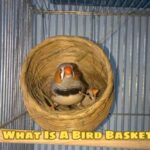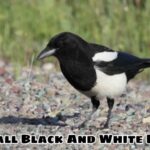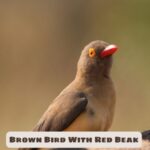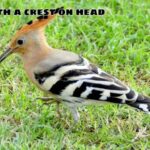Referring to the tropical forests of Southeast Asia, we cannot help but be amazed by the brilliant beauty of the orange breast black head bird. This precious bird possesses unique plumage with two opposing colors: the head and neck are as black as coal, the breast and belly are orange as bright as the sun’s rays.
Join Exoticbirdscorner to discover interesting things about this beautiful bird, from its biological characteristics, living habits, role in the ecosystem to threats and conservation efforts to protect its “colors”. “brilliant” in the middle of the green forest.
Introducing the orange breast black head bird
The orange-breasted black-headed bird, also known by the scientific name Hypsipetes guiffrigii, is a species of bird in the Turdidae family, distributed mainly in Southeast Asia, including Vietnam, Laos, Cambodia, Thailand, Malaysia. , Indonesia and Brunei.
This bird has a medium size, body length ranges from 20 to 23 cm. They have outstanding plumage with a jet black head, neck, wings and back, completely contrasting with the bright orange chest and abdomen. The orange-breasted blackbird has a black bill, brown eyes and gray legs.
Orange-breasted blackbirds often live in tropical and subtropical forests, especially in areas with dense vegetation. They are omnivorous birds, their main food includes fruits, insects and small animals. Orange-breasted blackbirds live in pairs or small flocks, often moving in search of food.
These birds play an important role in the forest ecosystem by helping to control insect populations and disperse seeds. The chirping of the orange-breasted blackbird also contributes to the lively sound of the forest.
The orange-breasted blackbird is a beautiful, rare bird that needs to be protected. However, due to deforestation and illegal hunting, their numbers are decreasing. Protecting habitat and raising public awareness of the importance of bird protection is essential to conserving this precious bird species.
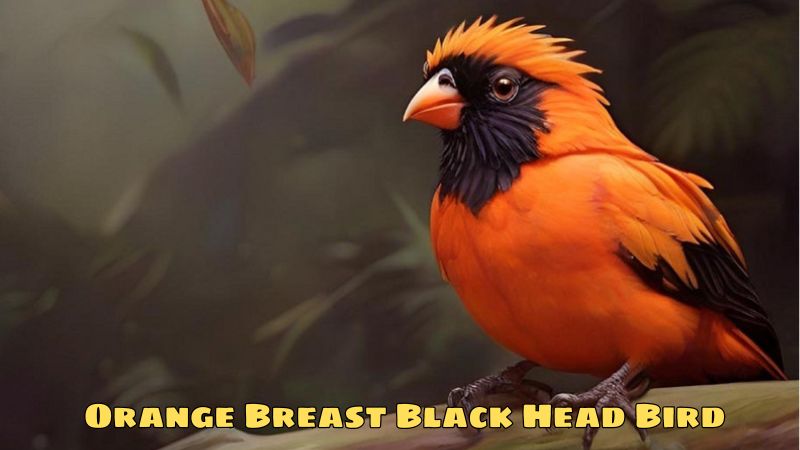
Distribution and habitat of the orange-breasted blackbird
They often live in tropical and subtropical forests, especially favoring areas with dense trees, thick foliage and abundant food sources.
The preferred habitat of the Orange-breasted Blackbird is usually between 500 and 1,500 meters above sea level. They often move in small herds to forage for food, mainly fruit, insects and small animals.
These birds play an important role in the forest ecosystem by helping to control insect populations and disperse seeds. The chirping of the Orange-breasted Black-headed bird also contributes to the lively sound of the forest.
However, due to deforestation and illegal hunting, the number of Orange-breasted Black-headed birds is decreasing. Protecting habitat and raising public awareness of the importance of bird protection is essential to conserving this precious bird species.
Living habits and nutrition of Orange-breasted Black-headed Bird
The Orange-breasted Black-headed Bird (Hypsipetes guiffrigii) is a bird that is mainly active during the day. When dawn breaks, their chirping echoes throughout the forest, signaling the beginning of a new day.
These birds often live in pairs or small flocks, moving continuously to find food. They spend most of their day searching for ripe fruit, insects and small animals in the canopy or on the ground.
The Orange-breasted Black-headed Bird has the ability to fly flexibly and climb expertly on tree branches. Thanks to their strong beak, they can easily catch insects and small animals.
In addition, the Orange Black-breasted bird also has the habit of pecking at ripe fruits, helping to disperse seeds and contribute to the forest regeneration process.
The orange-breasted Black-breasted bird’s diet mainly includes:
- Ripe fruits: This is their main food source, including bananas, mangoes, guavas, plums,…
- Insects: Orange-breasted Blackbirds like to eat insects such as grasshoppers, crickets, insects,…
- Small animals: Occasionally, they also catch and eat small animals such as lizards, small snakes,…
It can be said that the Orange-breasted Black-headed bird is a bird with unique living and nutritional habits, contributing to the diversity and richness of the forest ecosystem.
The importance of the Orange-breasted Blackbird in ecosystem ecology
The Orange-breasted Black-headed Bird (Hypsipetes guiffrigii) plays an extremely important role in the plant and animal network, contributing to maintaining the balance and stability of the forest ecosystem.
As omnivores, Orange-breasted Blackbirds mainly feed on ripe fruit, insects and small animals. Consuming insects helps control the number of insects that harm crops, protecting forests from harmful agents.
In addition, the Orange-breasted Black-breasted bird also plays an important role in dispersing seeds. When eating ripe fruit, they swallow the seeds and then excrete them elsewhere, creating conditions for the seeds to germinate and grow into new plants.
The Orange-breasted Black-headed Bird is also a food source for a number of predators such as falcons, snakes, etc. Their presence contributes to maintaining the food chain and biodiversity in the forest.
Therefore, the conservation of the Orange-breasted Black-headed bird is extremely important. Protecting habitat, limiting deforestation and illegal hunting are essential measures to protect this precious bird.
Protecting the Orange Black-breasted bird not only contributes to protecting the forest ecosystem but also brings benefits to humans. Green forests, with the presence of Orange-breasted Black-headed birds, will provide clean water, fresh air and create habitat for many other plant and animal species.
Let’s join hands to protect the Orange-breasted Black-headed bird to protect the forest ecosystem and our lives.
Risks and Conservation Efforts of the Orange-breasted Black-crowned Bird
Despite playing an important role in the forest ecosystem, the Orange-breasted Black-breasted Bird (Hypsipetes guiffrigii) is facing many threats, causing their numbers to decrease.
The main risks to Orange-breasted Blackbirds are
- Habitat loss: Due to deforestation and logging, the Orange-breasted Black-breasted bird’s living area has been severely reduced, leading to a lack of food and shelter.
- Illegal hunting: Orange-breasted Blackbirds are hunted for their meat and feathers, leading to significant population declines.
- Use of pesticides: Indiscriminate use of pesticides in agriculture can affect the food source of Orange-breasted Blackbirds and harm their health.
- Climate change: Climate change affects the habitat and food source of Orange-breasted Black-crowned birds, making it difficult for them to adapt and survive.
To preserve the Orange-breasted Black-headed bird, practical measures are needed such as
- Protect forests: Prevent deforestation and indiscriminate logging, and plant more trees to expand habitat for birds.
Anti-illegal hunting: Strengthen propaganda to raise people’s awareness about the importance of protecting Orange-breasted - Black-headed birds, and strictly handle illegal hunting acts.
Limit the use of pesticides: Encourage the use of biological pest control measures to protect the environment and bird food sources. - Research and education: Continue research on the behavior, ecology and risks facing the Orange-breasted Black-headed bird to have effective conservation measures.
- Raising community awareness: Strengthen propaganda and education about the importance of protecting Orange-breasted Black-breasted birds, encouraging people to participate in conservation activities.
Only with the cooperation of the community can the Orange-breasted Black-headed bird be protected and maintained in the forest ecosystem.
Epilogue
The Orange-breasted Black-headed Bird is a valuable bird species, playing an important role in the forest ecosystem. With unique plumage, chirping sounds and unique living habits, this bird contributes to the diversity and richness of nature.
However, due to threats such as habitat loss, illegal hunting and climate change, the number of Orange-breasted Black-crowned birds is decreasing. Protecting this bird is the shared responsibility of each individual and community. Let’s join hands to protect the Orange-breasted Black-breasted bird to protect the forest ecosystem and our lives


